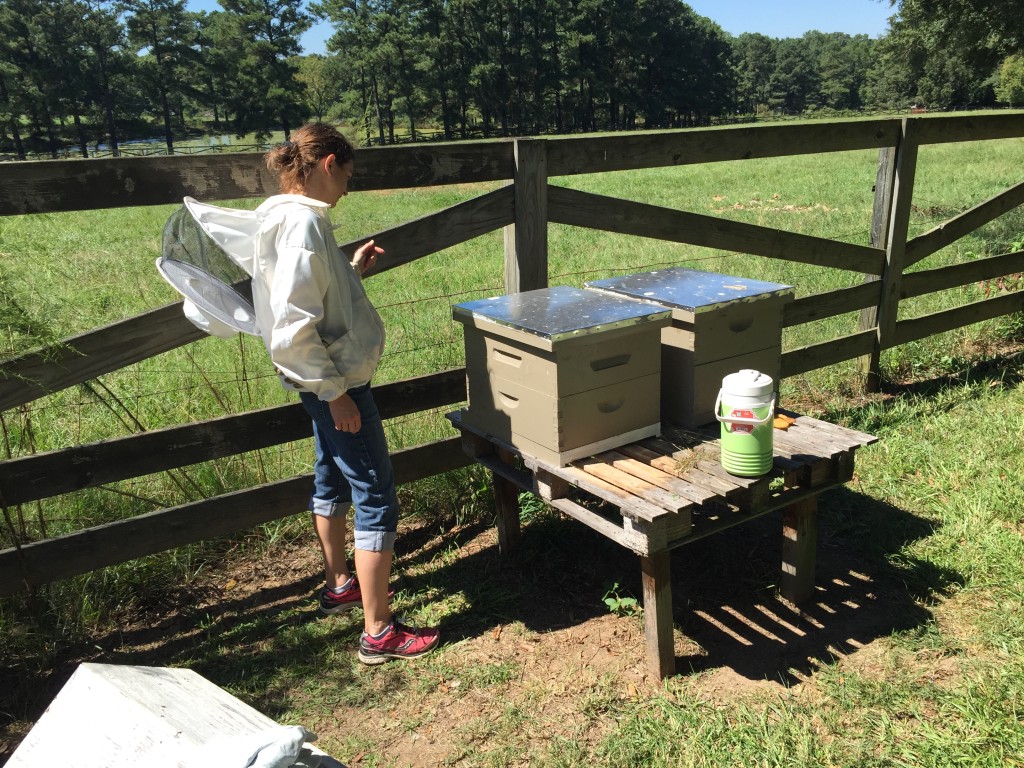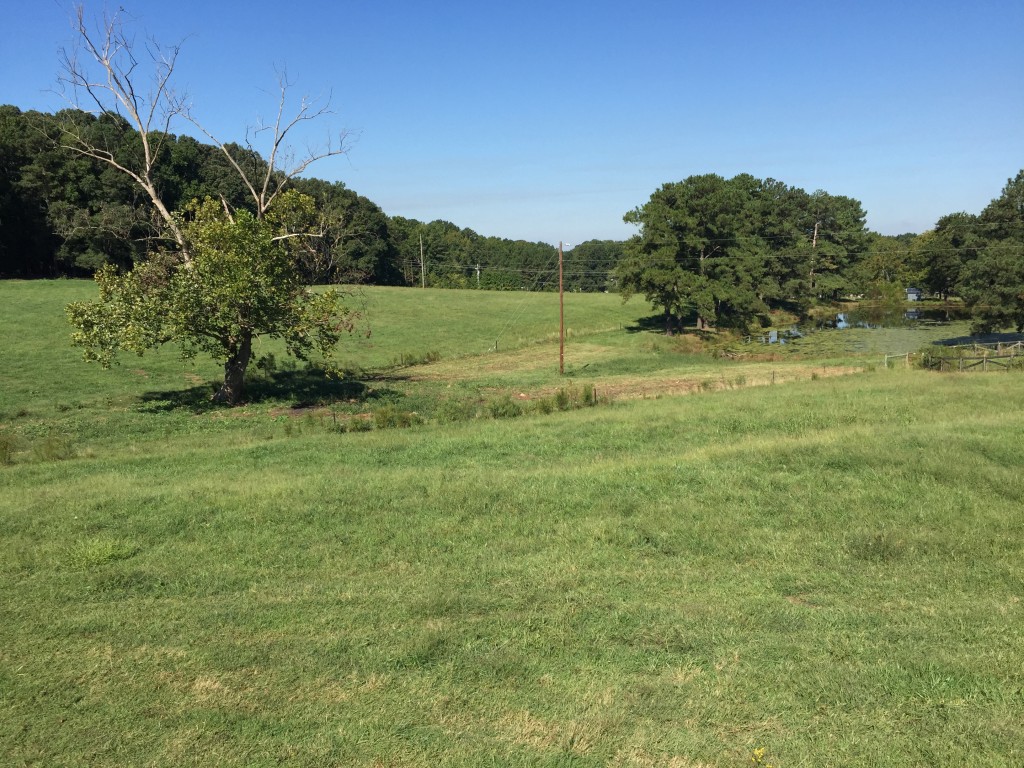
Last week Jennifer from Buck Naked Farm came out and checked on all the hives. The two that were rehived, shown here above, were doing well. They had emptied the feeders, reattached the comb we placed into the frames, were laying eggs, and bringing in pollen. We had to greatly reduce the hive entrances because the neighboring hive was robbing these guys something terrible but with the hive entrances reduced to the smallest size they could finally defend their hive and start making progress. Jennifer thinks we may have to combine these two hives into one depending on how they do the next month or two. If so we’ll keep the queen in the hive that is farthest to the right because we know she is a new queen. The hive to the left is a native swarm and Jennifer wants to requeen that hive in the spring should we not combine them this fall. The thought is to have a young queen whenever possible.
The remaining top bar hive looked ok as well but not as good as I’d have thought for how good the hive looked all summer. There was lots of honey and brood but they hive certainly wasn’t bursting at the seams. There were about 6-8 bars with nothing on them so there was plenty of room for the bees to continue growing.

One thing we’ve done to help the bees along is to plant pollinator areas with the help of the US Bee Buffer program. We received about 3 pounds of seed with a variety mix I’m looking forward to seeing come up. Pictured above you can see the two strips cut low on each side of the telephone pole. We planted both of those areas, plus another couple of acres in our back pasture. These were planted mid-September. The areas shown above is about 100 yards from our hives so if everything comes up, the bees should have a short flight to a big buffet.
Hopefully our pollinator planting will give the bees a boost heading into fall and help them get through the winter. I’m looking forward to next spring when we can get these hives in production and add some new hives.